World Turned Upside Down
or how one record changed my whole life.
(To enjoy this feature TO THE EXTREME!, install the excellent Spotify and click the song titles to hear the songs. Failing that, I’ll just have to try to paint you a picture of some sounds, but made with words instead of paint.)
In the heady atmosphere of 1985-1986, I never thought I’d live to see the day when The Jesus And Mary Chain – musical revolutionaries, performers of shambolic 20-minute sets of hellish white noise and inebriated chaos, banned from Student Unions across the country because of their concerts’ tendency to end in (sort-of) riots, scruffy council-estate urchins from the industrial wastelands of West Central Scotland – would be having their music celebrated and given away free with copies of The Times.
I guess if you’re right, and if you wait patiently enough, the world sometimes comes round to your way of thinking eventually.
That’s not what I want to talk about here, though. In so far as I can establish, it’s rare that one can say with certainty that a piece of popular culture – whether it be music, a book, a film, a painting, a comic or anything else – has completely by itself genuinely changed the entire course of your life, from the way you dress to the way you act, the places you go to and the people you associate with.
But that’s exactly what Jim and William Reid’s epochal 1985 LP “Psychocandy” did for me. I was an entirely different person the day after I heard it to the person I was before. (For a start, without it you wouldn’t be reading these words now, because I almost certainly wouldn’t have ended up being a writer.)
It opened my eyes to a world I never knew existed, that I didn’t even know I’d been looking for until I discovered it, whereupon I instantly knew it was where I belonged. This feature isn’t intended to take you to that world – hey, you might not like it – but rather to illustrate that other worlds exist outside your awareness, and can be travelled to in a heartbeat, without even meaning to. (It’s also something I’ve owed this record for over 20 years, and it’s time the debt was paid.)
Since my personal route to epiphany isn’t of much relevance to anyone else, though, I’m mostly going to try to convey what’s special about these songs themselves, in the order you’ll hear them. It’ll inevitably still involve a certain amount of local colour, of course, particularly towards the end where the point is located (and in this very next bit), but you’ll just have to live with that.
As fate would have it, it’s wholly possible that I’m largely responsible for the JAMC’s first ever daytime radio play. “Just Like Honey” was the Mary Chain’s fourth single, coming out after the album, but at the time both their sound and their reputation were far too abrasive and frightening for daytime listeners, and the notion that such a band could get mainstream exposure even for a delicate tune like “Honey” was outlandish.
This was still the case on the day I got through to my local station Radio Forth to play “The Jingle Machine Game” on Jay Crawford‘s lunchtime show. The game was a fruit-machine-themed phone-in where you had to answer a qualifying question for the right to shout “Stop!” at a tape loop, whereupon it would play three sound effects and you’d win various prizes depending on what they were.
Following a preamble where we’d talked a little about music and I’d mentioned the JAMC, I almost tripped up on the question. (Nobody ever failed on the question.) Asked to name three famous painters, I came up with Leonardo da Vinci and Andy Warhol, and then racked my empty 17-year-old brain in panic for about 20 seconds before desperately yelping “Rolf Harris!” in a flash of inspiration just before the time ran out. Phew. I didn’t win the jackpot (£25, I think) on the game, but I seem to recall getting a Radio Forth mug or some such promo trinket.
After the usual short closing chat with Jay, he asked if I wanted to say hello to anyone. This was the local radio and television convention of the time – before the internet, digital satellite TV, citizen journalism and such, it was still a novelty for normal people to be seen or heard on any sort of broadcast media, and traditionally they’d be given the opportunity for a toe-curling shout-out through the wireless to their posse, ie their mum and dad and Auntie Betty and, always, to “anyone else that knows me“. I thought for a moment or two and said no.
[pause]
“Did you say ‘No’?”
“No thanks, Jay.”
This was unprecedented behaviour. There were a couple of beats of stunned silence, but I fancied I could hear surprise and joy in the DJ’s voice as we said goodbye. The station went straight to a commercial break, and when it came back a couple of minutes later he said “This one’s for Stuart, who didn’t want to say hello to anybody” and – out of spontaneous gratitude, I still like to think – played “Just Like Honey”.
In the context of the easy-listening 80s pop of the lunchtime show, it sounded like something from an alien universe. Though it has a soft and gentle melody, a quite romantic lyric and a big Spector-esque wall of sound that wasn’t in itself entirely anathema to popular radio even in 1986, I never heard it in the daytime again.
MINI-FACT! “Just Like Honey” would eventually go on to achieve a kind of mainstream fame in 2003 when it featured over the closing sequence and credits of Sofia Coppola’s wonderful movie “Lost In Translation”, creating another uniquely special moment for WoS in the process.
“Just Like Honey” is an attention-grabbing and accessible opening track, but “The Living End” is more like what anyone who read the Mary Chain’s reviews would be expecting. Kicking straight off into a maelstrom of dense, metal-grinding noise, the song has the same rhythm and momentum as its subject matter – a breakneck motorcycle ride that’s slowed only fractionally by occasional sweeping curves in the road, before the surprise-twist ending as the narcissistic would-be hero in black leather meets his grisly comeuppance.
It’s a remarkable depiction of a visual story using only sound – a trick “Psychocandy” pulls off more than once, as we’ll see – and a nice little splash of deadpan iconoclastic comedy too.
If you didn’t want to be in a band that looked like this when you were 17, you’re either lying or some sort of disgusting freak. Not the good sort, either.
This one’s a bit of a filler, if we’re being honest, and seems to mostly exist to provide another noisy track to stop side one being too mellow. It works in the context of the album, but it’s not a track you’d imagine often choosing to play in its own right. There are some nice sheets of feedback, though, and it does score a point for being the first time I’d ever heard a song feature the word “cunt” in its lyrics. And in a quite spectacularly gratuitous way, to boot.
Years before “Just Like Honey”, this was the first Mary Chain song to make it onto a movie soundtrack, showing up in John Hughes’ likeable teen romance “Some Kind Of Wonderful”. (Which is basically a straight remake of “Pretty In Pink” except with that film’s terrible, wrong ending fixed.)
Despite its jaunty, swaggering tempo and Spector-esque sound, “The Hardest Walk” is a deeply inappropriate song to use in the sort of feelgood coming-of-age movie Hughes specialised in – since it’s about someone trying to find the strength to leave a dead relationship – but it works anyway. The movie version is a slightly poppier re-recorded take, but even the original is played with a fairly straight bat – it’s warm and fuzzy, with little in the way of outright noise, and it does a good job of showing off just how invitingly pretty most of the JAMC’s tunes were underneath all the horse-frightening feedback and chaotic racket.
And as if to emphasise that fact, “The Hardest Walk” is followed with the quietest song on “Psychocandy”, in the form of this cosy little acoustic fireside ballad about honey bees and the helpless vulnerability of being in love. Of course, this being the JAMC the sentiment is expressed in unconventional style (what other artist, the listener has to ponder, would consider “You cut me dead / You nail me down and kick my head” a touching sentiment?) but it’s still a rather beautiful song. Not everyone sees love as pink fluffy teddy bears.
The next track is a bit less cuddly, though. “In A Hole” is the song that probably comes closest to encapsulating the band that the JAMC were widely hyped as being by the press, during the days when their shows were attracting a rather nasty crowd of dimwits looking mostly for a punch-up. It’s a visceral, punky thrash with silly throwaway lyrics about rubber holy baked-bean tins and something living in the singer’s hole, whatever that means. (I’m hoping it means he’s got some nice goldfish in a pond in the garden, personally.)
“In A Hole” is good for getting the moshpit going, and the feedback at the start and end was handy for sampling and looping (as heard on some very rudimentary-proto-Chemical-Brothers four-track demos by famed West Lothian soundclash icons These Modern Haircuts), but it’s pretty insubstantial stuff and the band never really revisited the same kind of shallow ground on any of their subsequent records, which was probably for the best.
MINI-FACT! Now seems a relevant opportunity to throw in a mention for this hefty and superb book, which (as well as depicting the settings for much of your reporter’s youth) contains lots of great stuff about the violence at early JAMC gigs, and also the band’s beginnings in general. It was a staple of the late lamented Fopp’s £3 bargain racks a few years ago, but is now long out of print and starting to fetch silly prices, so grab a copy while you can still afford one. It’s worth every penny.
One of the most appealing things about “Psychocandy” is how lean it is. Not only are its tunes made with the bare minimum of equipment and a mere handful of chords, none of them outstay their welcome. Just one song scrapes through the four-minute barrier, (by a mere three seconds) and ten of the album’s fourteen tracks are under three minutes long. Briefest of all is “Taste Of Cindy” – melodically a sort of first draft of “You Trip Me Up” – which clocks in at just 1m 42s to close side one on a cheerier note than the sullen nihilism of “In A Hole”.
MINI-FACT! For younger viewers puzzling over the term “side one”, the compact disc was a still a small niche format in 1985 and the majority of albums were still released on vinyl and tape only, requiring primitive, grunting listeners to get up and physically turn the disc or cassette over in the middle of the album in order to hear the songs on the second half.
Side two bursts straight into life with the JAMC’s breakthrough hit. While the debut single “Upside Down” had attracted a fair bit of attention in certain small niches in the music world and been played extensively on the John Peel show, “Never Understand” was the song that saw them make it big in the alternative press. Faster and catchier than its predecessor, with more clearly-discernible lyrics (and of nice easy-to-digest vague teenage rebel swagger), it’s just as pogo-friendly as the likes of “In A Hole” but much less bleak and more poppy, and it caught on like wildfire, even selling enough to make a small dent in the “real” charts, where its peak of No.47 was still an astonishing feat for such a new band. (Nowadays you can get to No.47 by busking outside a Tube station and taking in anything over £8.20.)
The Mary Chain’s first ever Edinburgh gig, on 5th September 1985, is as close as I’ve come in my life to how it must have felt to see the Sex Pistols play on the Anarchy tour. During the day the venue was a roller-skating rink called Coasters, but at night it was a classic dancehall-type venue, probably holding around 500-600. Support was from the epically abysmal Meat Whiplash and the splendid Shop Assistants, and the Mary Chain finally took the stage about two hours late, somewhere around 1am.
(This meant a missed last bus and an optimistic 20-mile hitch-hike home for four dodgy-looking indie-goth kids in the early hours of the morning, and indirectly caused me to fail my driving test the next day by taking it while I was still probably technically drunk. But all that’s another story.)
The NME review of the gig was an invaluable lesson in journalism. The paper was hyping the band hard by this point, which was an easy task with the records but presented a tricky dilemma in trying to make the gigs sound like unmissable landmark cultural happenings, because describing them truthfully would have involved terms more like “drunken, unlistenable shambles”.
So instead, the hapless writer was forced to conjure picturesque and enticing notions of what was really taking place, building them from a very few tiny but tangible crumbs of reality. I no longer remember who penned the piece, but it created its intended impression in my mind, and fragments of it are still there even 22 years on.
Acknowledging the aforementioned drunken unlistenable shambles, the imaginative hack added “…but when the four elements gyrate threateningly close to one another,” (which meant when all four of the band were playing the same song, at roughly the same speed and in roughly the same key), “something something supernova something and a new sun shines blindingly from the stage”. (Hey, I said I only remembered fragments.)
No such thing had happened, of course. I’d been right there the whole time and it was still a drunken unlistenable shambles, unimaginably thrilling as an event but musically indefensible from start to finish. From behind an unrelenting deluge of feedback and random noise the band played a total of five things that could be discretely identified from the mess as songs, one of which was “Inside Me” and three of which were “You Trip Me Up”. (Evidently there was some sort of hilarious mix-up with the set-list. Or maybe they simply wanted to keep doing it until they got it just right.)
The fifth was unrecognisable except that it was definitely a complete song of some sort, and then the band staggered off. But I’d learned some important things:
One, that you should never trust writers. (In other NME reviews of later JAMC gigs I’d personally attended, the reviewer would angrily bemoan the absence of songs which had unmistakeably been played, and glowingly acclaim ones that definitely hadn’t.)
Two, that you should never let minor technical issues – such as the gig being dreadful – get in the way of the big-picture important facts (ie that this band is awesome and is something you should be listening to).
And three, that “gyrate threateningly” is a tremendously excellent phrase which you should endeavour to gyrate threateningly into anything you write whenever possible.
Barely distinguishable from “Just Like Honey”, this is almost exactly the same song except lacking its twin’s shimmery sprinkling of starlight. (Translation: there are no sleighbells on the drums.) That gives it an understated charm of its own, but the best thing about it are the hilariously misheard lyrics, which if you believe the internet are a strikingly prescient prophecy of the coming of the iPhone and iPod Touch:
“I should be on my phone/I’ll go where that apple goes/I touch with an apple touch”
(The ineptitude of lyrics sites only obscures the fact that the real lyrics are rather cute and funny, talking as they do of feeling as sharp as a carving knife and fooling around with the farmer’s wife, in an entirely unexpected reference to the popular nursery rhyme Three Blind Mice.)
“Sowing Seeds” is a pretty little song, but it’s really just clearing the decks and preparing the scene for what All Music Guide called “the secret gem” of the album, so let’s move on.
This is the one.
Running away
I’ve got something to say
You’re in my way
So goodbye yesterday
I’m gonna run and find a place where I can hide
Somewhere that no-one knows, some place that no-one goes
Don’t come look for me, I’ll be where you can’t see
Somewhere I can’t be found, my little underground
Easy to see that you’re laughing at me
No guarantee, at least none that I can see
And it’s cold outside
Doesn’t work out right
Gonna stay inside
Gotta stay inside
Sun shines so high
Bright in the sky
Sun shines so high above
And it’s cold outside
Doesn’t work out right
Gonna stay inside
I can’t, can’t understand it
Don’t know why, don’t know why
Just can’t, can’t understand it
Don’t know why, don’t know why
And it’s cold outside
Doesn’t work out right
Here’s a peculiar thing. When I first heard “My Little Underground”, and for many months afterwards, I couldn’t make out half of the lyrics at all. I didn’t even register that the title was in there for several weeks.
But it didn’t make any difference, because the song’s sound alone, full of sadness and defiance, conveys everything it needs to say – the lyrics could be in Swedish, German or Martian for all it matters. More than two decades on, the eerie opening whoosh is all it takes to send a real, physical shiver up my spine.
The entire song from there is one long, mournful wolf howl rushing and echoing through the endless night of a bleak Arctic tundra, occasionally washed over by silver cascades of freezing water as the reverberations of the beast’s plaintive keening send icebergs crumbling into the sea and avalanches sliding down mountains.
You know, pop music.
“My Little Underground” isn’t so much a song as a place – a landscape carved by sound. Its chorus will be the inscription on my headstone. It’s two and a half minutes long. It’s my favourite song ever in the whole wide world. I hope you don’t like it.
While it comes late in the album, this track is actually where it all started for WoS, through a series of coincidences so unlikely that it still chills your reporter’s bones to think how easily it could have been otherwise. The town where I lived, despite being home to 18,000 people, didn’t have a dedicated record shop. You could get chart singles and LPs from Woolworths or John Menzies (the Scottish arm of WH Smith), but for anything more left-field your only hope was Rainbow Records And Cards, a little Hallmark-style card shop in the town centre which had a wall-mounted rack of seemingly random 7-inch singles just inside the door.
Just out of school and unemployed, I’d often blag a lift into town in the morning when my mum went to work, to save the bus fare. One day I popped in looking for something by Big Country or Frankie Goes To Hollywood (probably), and by chance one of the records at the front of the rack rang a vague bell. I remembered reading about the JAMC in an improbable two-page feature in pop fortnightly Smash Hits – I hadn’t even heard of the NME at this stage – and also recalled the single and its predecessor getting rave reviews in other issues of the mag from indie celebrities like Radio 1 DJ Andy Kershaw and Simon O’Brien, who played Damon in Brookside.
(Smash Hits at this point in time was an incredible magazine, covering a breadth of musical types that would seem absurdly scattergun in today’s world of highly-specialised narrowcast media, and the Mary Chain sitting cheek-by-jowl with Nik Kershaw was nothing unusual. It was the era of its being edited by Neil Tennant – who’d go on to huge pop success of his own in the Pet Shop Boys – and Mark Ellen, and few publications more joyful, intelligent, passionate and lovingly constructed have ever seen print in any field. It was a massive influence on Your Sinclair, and from that to Zero and Amiga Power and others. I write more on it here.)
I also liked the song title and the band name, and on such a tiny random chance and impulse I forked out £1.35 for the 7-inch (which is about £2.23 inflation-adjusted, or around a quarter of my weekly disposable income at the time) and got the bus home.
My parents had a beefy old tower-style music centre, which was built long before the days when Health & Safety rules made hi-fi equipment practically inaudible, so having read about the unimaginable row this band was said to make I cautiously set the dial to half volume and dropped the needle onto the vinyl. That approach lasted as far as the end of verse one.
It’s obvious within seconds that there are two acceptable volume settings for a song like “You Trip Me Up” – as loud as humanly possible regardless of potential hearing damage or death, and off. I practically wrenched the dial off as I turned it to maximum. Although the two-foot-high speakers were now filling the room with deafening white noise to the point where they were all but shaking the paint from the walls, I stuck my head as close to them as it would go. I’d have climbed right inside if I could.
Sonically “You Trip Me Up” is an extraordinary record, and not just because of the unusually polarised combination of melody and noise. More than anything else, it sounds like surfing. Not, as was sometimes erroneously suggested by reviewers, like surfing music, (though the JAMC would later go on to cover the Beach Boys) but like actual surfing. The feedback and distortion comes in palpable waves, with the vocals carried along on top of them, seemingly helpless at the mercy of the unpredictable, surging currents. These pasty, malnourished East Kilbride boys were unlikely surfers to be sure, but there was no mistaking the combination of huge, swelling breakers and lacerating salt spray in the noise that was flooding out of their music.
I couldn’t believe what I was hearing. In fact, it felt like something different and altogether more primal than “hearing” – this tumultuous sonic ocean seemed to be smashing directly into my body through its whole surface area, without bothering to channel itself through the ears at all. It was practically a violation. I don’t know exactly how many hours I played it for non-stop (though it was probably until my parents got home in the early evening), overwhelmed anew every time, but by the time I stopped I was a completely different person.
(If all that sounds fanciful and exaggerated, more worldly and modern viewer with the whole wide world of music a mere moment’s mouse-click away, remember that my idea – and most people’s idea – of the challenging outer edge of pop music at this point was Simple Minds. Because in fact that pretty much WAS the challenging outer edge of pop music in 1985 – if anything, most of the “alternative” music of the period was a lot duller and more conventional, certainly in terms of how it sounded, than chart-topping acts like Frankie Goes To Hollywood.)
The closest I could come in terms of a comparison for what I was feeling that afternoon is the end of “The Truman Show”. My life had been bumbling along in no particular direction, with no sort of inkling that it could ever amount to anything remotely interesting, and no idea what that would be even if it could. But suddenly, in a couple of minutes, a secret door to a hidden universe had been kicked open in front of my eyes. I’d stumbled through it into an unimagined world more exciting than anything I’d ever imagined existing, and there was no way I was ever coming back.
The first thing, of course, was to find more of this astonishing music. I discovered that there had been two previous singles, and getting hold of them meant my first-ever solo journey to Scotland’s capital city, Edinburgh, which to us was a far-off land of mystery and danger. (Though it was actually barely 20 miles away, the circuitous bus journey meandered through nearby towns and villages like Livingston, Dechmont and Uphall and took an hour and a half each way, emphasising the disproportionate sense of distance. The following year, however, Bathgate’s railway link to the capital would be re-opened after more than 20 years dormant and cut that time to a mere 23 minutes, something that would prove crucial to my new-born cultural and social life.)
The destination was the HMV shop on Princes Street, which at the time was a narrow little black-painted and neon-lit dungeon, intimidating and thrilling in itself (imagine it if you can, viewers – there was a time when HMV was edgy and cool), but the glamour and grandeur of the city it sat in blew my horizons apart like an atomic bomb.
I’d established from the pages of Smash Hits that a shop called Ground Control somewhere in Edinburgh stocked the alternative-fashion clothing brand Phaze (which I knew of from its frequent adverts in Smash Hits), so clutching my little bag of 7-inch singles and still dazed by the scale of my surroundings I found my way to Cockburn Street, which is now a dismaying mix of corporate skatewear and health-food shops but in 1985 was Goth Central from bottom to top, with only numerous pubs and a perfect old-style cafe/sweet shop breaking up the parade of fantastic indie emporia, selling clothes and studded-leather jewellery and bondage gear and poppers.
More critically, every single store seemed to be staffed/inhabited by the most jaw-droppingly gorgeous punk and goth girls imaginable – I’d never seen, or even dreamed of, anything so beautiful. This was, unquestionably and immediately, it – I’d found my taste, my niche, my perfect fit. My little underground.
Feeling appallingly conspicuous and acutely self-conscious in my own Big Country-style check shirt and blue jeans, I swiftly kitted myself out with some more stylish threads (black grandad shirts and the pretty convincing leather-look PVC jeans from the Phaze ad pictured above: 26-inch waist, ravages-of-time fans). Then I headed off home for my first ever haircut-as-fashion-statement, which is another story again. I was, now in every sense of the word, a changed person.
But anyway. By the standards of the album, and despite its title and lyrics, “Something’s Wrong” is actually a relatively upbeat number. While the story is of a lost relationship and a bleak outlook (“Cracked-up years behind me / Cracked-up years ahead are all I see”), the chords cut a slightly more hopeful, questioning air, belying the gloomy certainty of the words. (The singer has identified and accepted the existence of a problem – “I’m feeling strange, I need a change / And I realise that there’s something wrong” – which, of course, any psychiatrist will tell you is the first step of the healing process from a state of depression.)
Though “Something’s Wrong” is both lovely and an obvious natural choice for a closing track, “Psychocandy” actually finishes on this tuneless clumping dirge – the only properly terrible song on the whole album – instead. It’s an inexplicable inclusion, because the JAMC had plenty of better songs going unused at the time – “Walk And Crawl“, say, or the album’s title track, both of which subsequently surfaced on b-sides compilations – and even if they hadn’t the album would have been better off just left as a 13-tracker rather than padding it out with this stinker.
Maybe the brothers were superstitious, or just wanted to leave themselves room for improvement on the second album. Maybe William really wanted to sing on one song on the record (this is the only vocal not sung by Jim). Or maybe it was deliberate, meant as an example of life’s imperfection, a trap for would-be imitators, or something. If so then mission accomplished, because it’s bloody awful and the only real stain on an otherwise flawless piece of work.
While it seems unlikely, I hope it’s the imperfection thing – a message to yourself that however good you get, you can always fall short of your own standards if you’re not vigilant, that you should always strive to be better. Whether the Mary Chain themselves ever did do better is a point for debate.
Certainly they never created anything else as influential as “Psychocandy” (where we find the roots of bands as diverse as Mogwai, the Raveonettes and Glasvegas as well as a million landfill indie-noise merchants), while their weakest release, “Stoned And Dethroned“, was their biggest commercial success. And to this listener’s ears the 1992 release “Honey’s Dead” is perhaps a strictly better album than “Psychocandy” in its own right, isolated from its wider musical significance. But “better” and “favourite”, as any wise reader knows, are very different things.
So that’s my story. “You Trip Me Up” (and its immediate consequences) was absolutely, identifiably and empirically, the thing that set my life on the path it ended up taking, and down which it still blunders. Without taking that impulsive leap on an unheard single, without Smash Hits’ admirably broad-minded editorial policy and Rainbow Records’ eclectic stocking choices, not only would the incredible music itself probably have passed me by but I’d also never have discovered the weekly music press, which exposed me to a colossal range of writing as well as to all sorts of new culture and ideologies, and a thirst for more that’s never left me.
I wouldn’t have gone to Edinburgh that day, wouldn’t have realised what a big wide world I was missing out on, wouldn’t have so much as contemplated the possibility that maybe I could do something creative like write for a living, and would probably, like so many of my school friends, have ended up with a job in a bank and a wife and kids and spent all my days from birth to death in Bathgate, because I didn’t know there was anything else you could do.
Of course, that might have turned out to be a wiser choice – there’s no way of knowing if I’d have been richer or more successful or happier that way. I doubt it. But whatever the ups and downs of this road, and whatever its ultimate outcome might be, I have no regrets. Because what “Psychocandy”, and especially “You Trip Me Up”, taught me – a lesson for which I’ll be grateful until my dying breath – is that you never know what’s around the next corner.
Even in the greyest of times, when you can’t see any sort of a light shining ahead of you – and sometimes when you don’t even know you’re in the dark – it can only take two-and-a-half minutes to turn your whole world upside down.
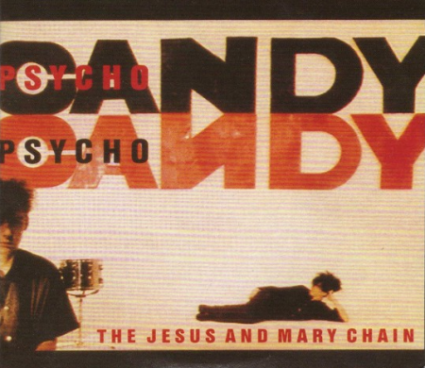
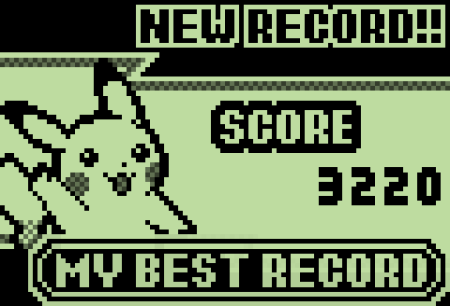
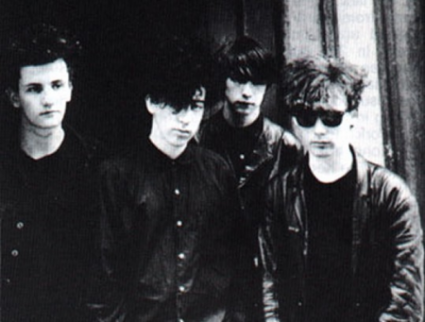
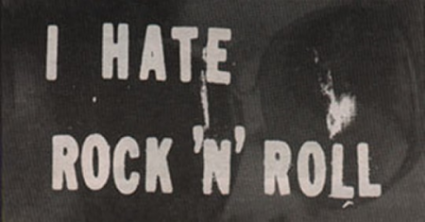

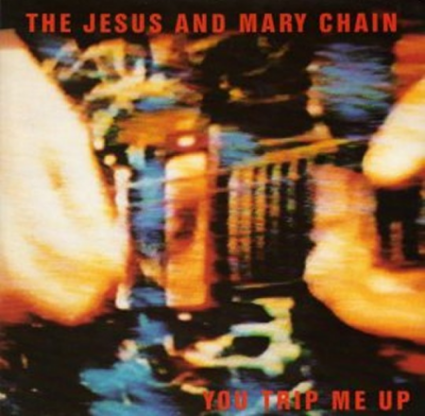

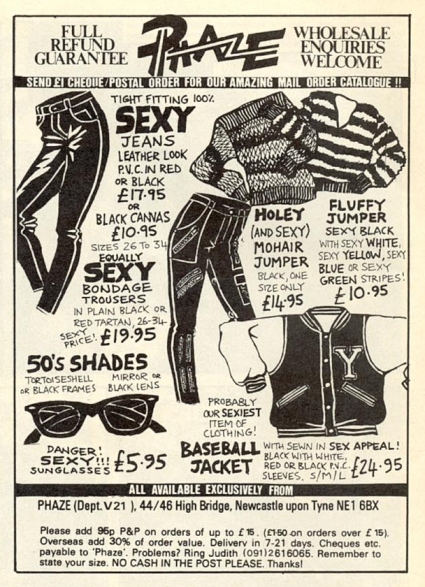
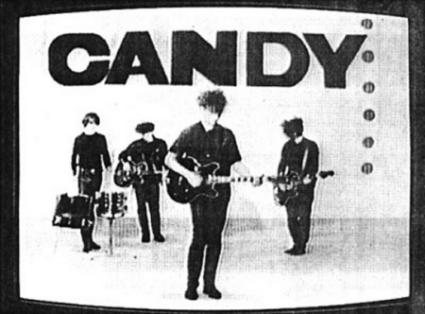


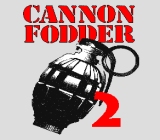

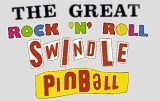

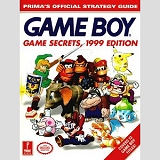

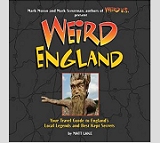
Without stroking cock, I maintain this is one of the best things you've ever written.
Absolutely fantastic article. This seriously deserves some sort of award.
Psychocandy is in my top five, I'm insanely jealous that you got to hear it back when it was released.
So many of my favourite albums have stinkers on them. Songs that may emerge from a random playlist and need skipping. A lot of praise gets lavished on Psychocandy and there is never really any reference to that. I suppose you could liken it to an abusive spouse.
I was a bit older than you the first time I heard the album. A decade and a half after its release. It still holds a lot of primal energy and power. It's one of my excuses for never learning to play the guitar properly. Honestly, what's the point? This and the Ramones and the Cramps. You'd have to be an idiot to bother. It sort of skewed my taste and world view in a way and made it difficult to get into other acts.
Thanks for the article. Thanks for putting out great content.
You know, I'd never really listened to this lot before, but I've got Psychocandy on now and it's far harsher than I'd expected. The guitar tones are almost Merzbow-ish at times, and the whole thing comes across like a melodic version of Mortalized vs. Guilty Connector(which is easy to find on Youtube, skip the first minute if you listen to it).
Yeah, thumbs up from a harsh noise enthusiast.
Thanks Stu, great piece about a great band doing a great album great great great, you can see why I'm in the comment section here.
I came into JaMC late and have only seen them once, three years ago at San Francisco's Fillmore while deathly sick; it was still one of the greatest nights of my life as the aging and amused Scotsmen on stage gave me a sonic baptism, a sand-blasting of sound that left me feeling stripped bare and open to possibility.
(Taste the Floor is my most-played track.)
Thanks for the memory trip Stu – my already huge respect for you has just grown again!
I too am glad you took that journey or we wouldn't have the priviledge of hearing and reading your passion for anything you direct your gaze on. Thanks